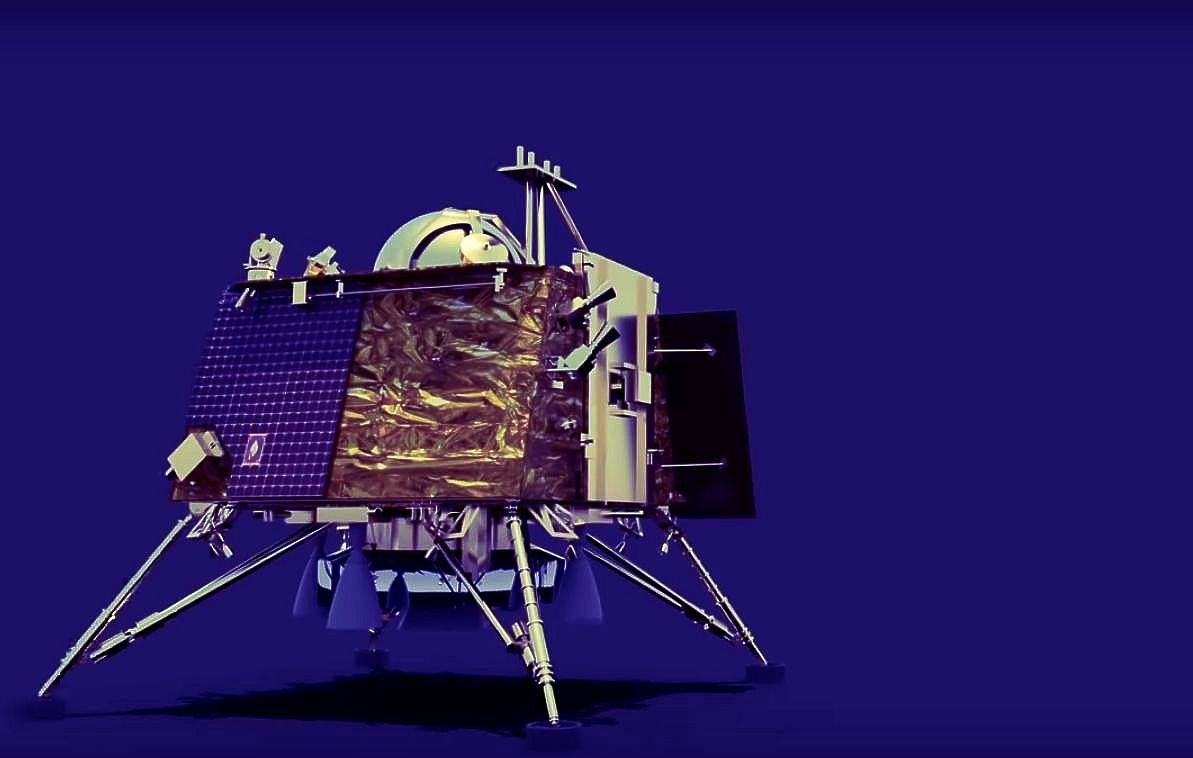Science
With Successful Landing Of Chandrayaan-3, ISRO Explores Further Moon Missions: Could Chandrayaan-4 Bring Back Samples?

Chandrayaan-2 lunar lander, Vikram. (ISRO/YouTube)
Following the successful soft-landing of the Chandrayaan-3 lander in the south polar region of the Moon, decks have been cleared for the Indian Space Research Organisation (ISRO) to unveil the next stage of its lunar exploration programme.
Presently, ISRO is in the midst of preparations for another lunar venture, this time in collaboration with the Japanese space agency, JAXA. Dubbed as LUPEX, or Lunar Polar Exploration, this mission is scheduled for launch in the years 2024-25. However, more developments are on the horizon within the Chandrayaan series.
“Of course, the Chandrayaan programme will not end with Chandrayaan-3. We have landed now. But there are many more things to do. It is natural to expect follow-up missions Chandrayaan-4, Chandrayaan-5 and so on. Those plans can be expected to be revealed soon,” said Mylswamy Annadurai, the mission director of Chandrayaan-1 that was launched in 2008.
“In fact, if Chandrayaan-2 had succeeded in landing, Chandrayaan-3 would have been a sample return mission. Now, maybe Chandrayaan-4 will be the sample return mission whenever it is planned. That is the next logical step to a lander and rover mission,” Annadurai said.
A sample return mission encompasses deploying a spacecraft capable of gathering lunar surface samples and safely conveying them back to Earth. The intricate process of retrieving a spacecraft from the Moon's surface, rather than solely from space, introduces heightened complexities to the already intricate tasks of landing and rover operations.
This was exemplified most recently by China's successful execution of the Chang'e-5 sample return mission in 2020.
Both the Soviet Union and United States have previously embarked on similar ambitious missions to bring back lunar samples.
The Soviet Union's Luna robotic missions during the late 1960s and early 1970s marked the initial attempts at lunar sample return.
The Luna missions, such as Luna 16, Luna 20, and Luna 24, achieved the retrieval of lunar soil and rock samples, contributing significantly to our understanding of the Moon's composition.
NASA's Apollo program conducted sample return missions through its Apollo 11, 12, 14, 15, 16, and 17 missions.
Support Swarajya's 50 Ground Reports Project & Sponsor A Story
Every general election Swarajya does a 50 ground reports project.
Aimed only at serious readers and those who appreciate the nuances of political undercurrents, the project provides a sense of India's electoral landscape. As you know, these reports are produced after considerable investment of travel, time and effort on the ground.
This time too we've kicked off the project in style and have covered over 30 constituencies already. If you're someone who appreciates such work and have enjoyed our coverage please consider sponsoring a ground report for just Rs 2999 to Rs 19,999 - it goes a long way in helping us produce more quality reportage.
You can also back this project by becoming a subscriber for as little as Rs 999 - so do click on this links and choose a plan that suits you and back us.
Click below to contribute.
Latest